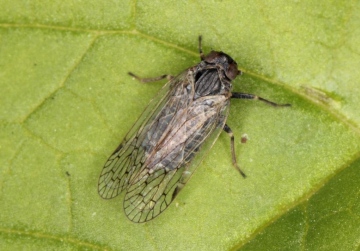Species Account for Oliarus panzeri
PLEASE NOTE, many records in this group are not yet available
Oliarus panzeri Low, 1883
Auchenorrhyncha: Cixiidae

Reproduction for study and non-profit use permitted, all other rights reserved.
Taxonomic group: leafhoppers and allies (Auchenorrhyncha) - Available county data
View time series maps for Oliarus panzeri
member log-on for taxon report
Essex RDB: Listed
Images
upload a new image
see Auchenorrhyncha Recording Scheme website
Essex Red Data List comment
National trend: Increase
Species text
The lace-winged planthopper Oliarus panzeri is a very local planthopper confined to southern counties of England with almost half the British records originating from Kent. The ecology of the species is somewhat obscure. It has been found on a number of occasions in areas which are periodically waterlogged, but which dry out and crack in the summer, and there is the possibility that the cracks gave the insect the opportunity for ovipositing below ground level. The nymphs, like those of other Cixiids, are believed to be root feeders, although the foodplants are unknown. Improved drainage of seasonally or irregularly flooded grassland may be a more serious threat in at least some areas. O. panzeri would seem to be dependant on minor habitat features, and its retention at a site is will require the maintenance of such features through any management programme. The optimal sites for the insect are probably poorly drained corners of pastures close to the hedges utilised by the adult insects, and perhaps also reasonably near to paths or gates where there is some poaching. Any such areas which dry and crack in summer should be regarded as potentially interesting habitat features, though they may appear rather uninspiring from the viewpoint of general conservation. The exact management of the grassland is probably relatively unimportant, since the nymph is subterranean and the adult fairly mobile. Very heavy grazing and poaching is to be avoided, but otherwise stocking levels can probably be fairly flexible (Kirby, 1992). References
Habitats
Recorded management for locations with Oliarus panzeri
Recorded substrate and hydrology for locations with Oliarus panzeri
Why not join the Club, register and add a new species page
Interpretation of distribution maps



















